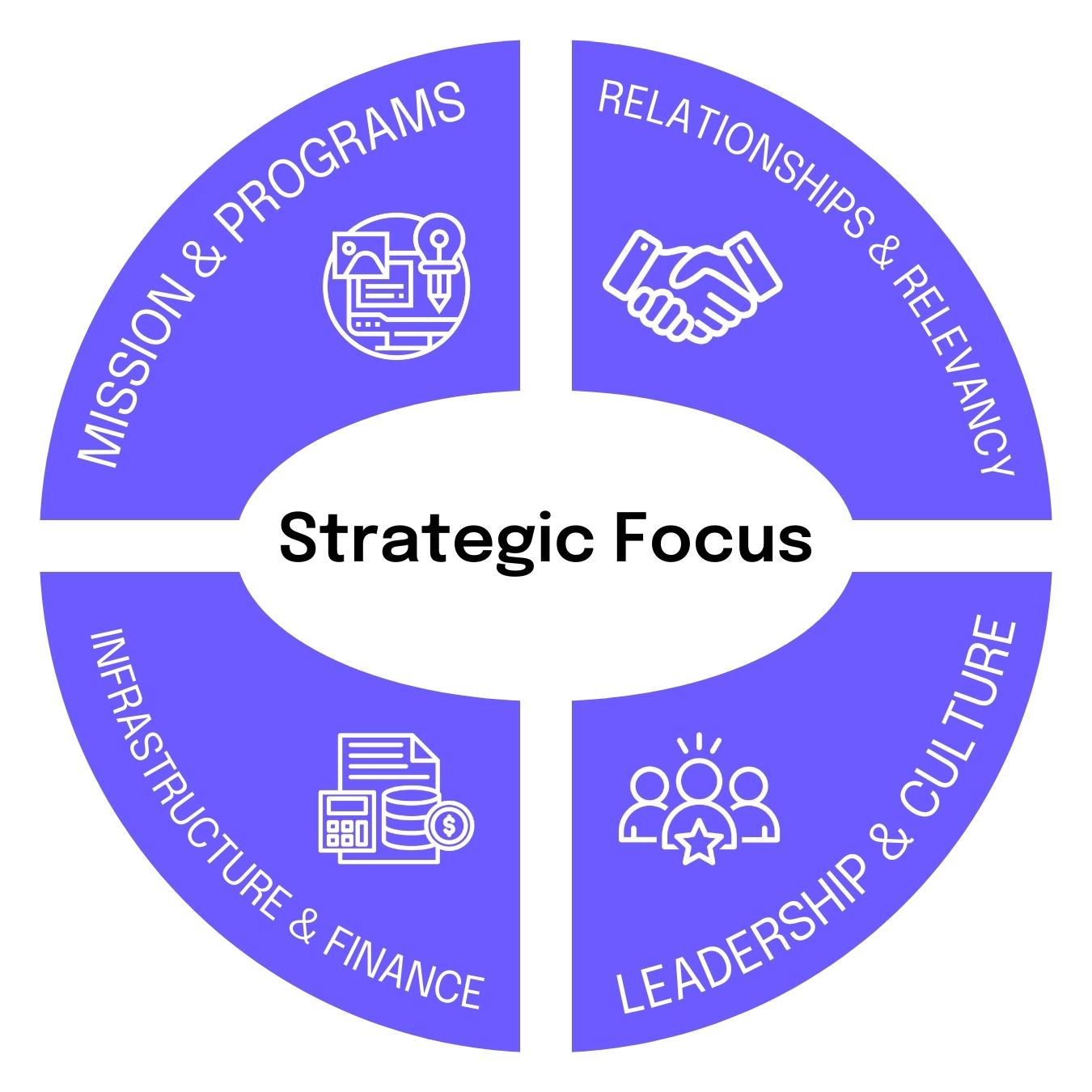Arts and culture organizations thrive when they can balance the wide range of goals and objectives that compete for their attention and resources. As a leader, your job is to strike that balance. Considering all facets of your organization beyond your creative programs and products is critical for your organization to stay healthy and sustainable.

Putting the “organization” in “arts and culture organization”
The Healthy Organization Model outlined below provides a framework for thinking holistically about your organization. Connecting the internally and externally facing parts of your organization using a strategic focus can bring clear direction and help deepen your relevance and effectiveness.
This model serves as the cornerstone of our DIY strategic planning method. It helps you think about your organization’s operational structure in terms of the balance between those internally and externally facing elements. Are they properly balanced so that they can support each other effectively? This approach can inspire you to conduct an internal assessment, or identify goals in your strategy roadmap.
Examine your externally-facing elements
Externally, your organization is likely focused on serving your community and your artistic mission. These are the questions that are designed to help you respond to opportunities within your community and offer programs that meet the needs of your audiences.
-
Mission & Programs
- What do you do, and why do you do it?
- What is your artistic purpose? Is it clear and consistent?
- How do you develop and deliver new programming? How do inclusion and equity show up in your programming decisions?
- Do you understand, measure, and communicate your value to your community?
-
Relationships & Relevancy
- How do you develop and nurture relationships across sectors and in your community over time?
- Do you know who your audience is? Do you understand what is important to them?
- Who are you centering in your work? What is your commitment to equity, inclusion, diversity, and accessibility, and how do you demonstrate it?
Examine your internally-facing elements
Internally, you are likely focused on developing and maintaining organizational strength and resilience. These goals can help ensure that you are investing in the resources necessary to sustain your organization’s health over time.
-
Infrastructure & Finance
- Do you have the staff and administration to meet organizational goals and needs?
- Are you measuring true program costs accurately and analyzing them regularly?
- Is your organization meeting its current needs without compromising the future?
- Are indispensable activities and resources being identified and funded?
-
Leadership & Culture
- Have you properly built, adapted and refreshed organizational capacity?
- Are your organization’s systems and processes aligned to support teamwork?
- How does your organization support equity, inclusion and access in decision-making and organizational structures?
Guided by a clear strategic focus
A strategic focus will help connect your goals to each of the areas listed above. Keeping a strategic focus at the center of organizational decision-making is the key to building a healthy organization based on this model.
-
For your organization, a strategic focus should be:
- The guiding focus for your work, informing and influencing all organizational goals
- Leveraging the competitive advantages that set you apart
- Developed collaboratively through a deep inquiry into organizational self-assessment and community needs
Share it with your team
Are you feeling inspired? Download this handout to stimulate conversations with your team about where you primarily focus your attention and where you might want to invest more energy. Consider bringing this into planning and budgeting conversations!
PDF